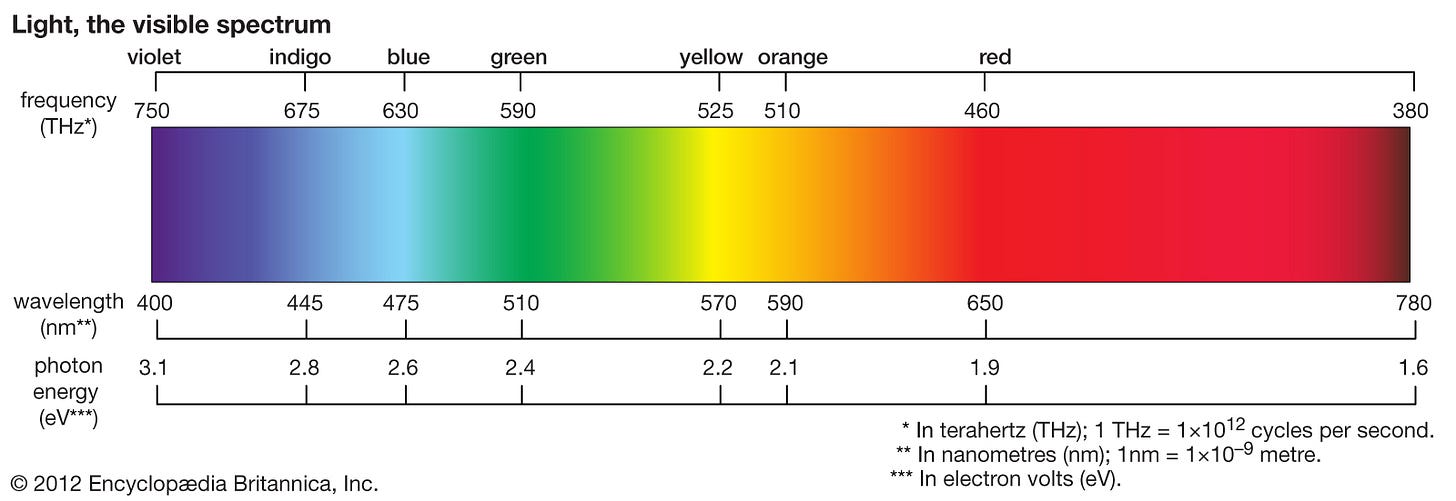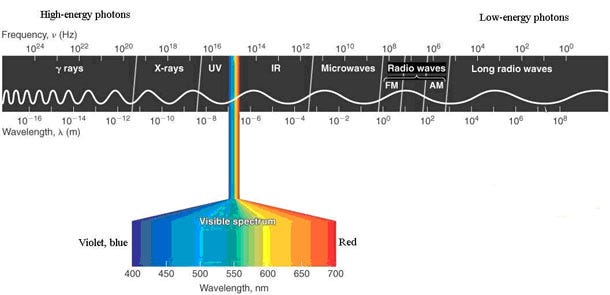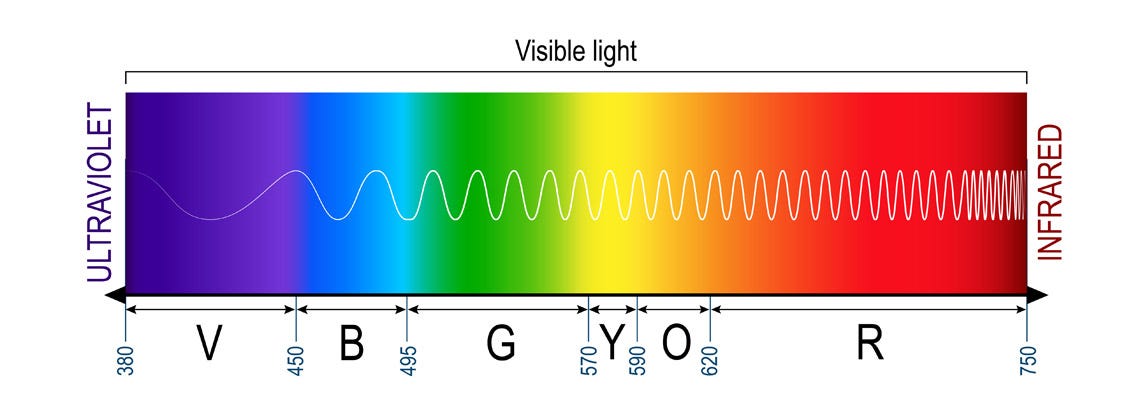From the blazing hue of a sunset to the delicate flush of a rose, the color red captures our attention and ignites our emotions like no other. Red is the quintessence of contrast — it represents love and danger, excitement and forbiddance.
This duality is what makes red a profoundly compelling color in both the natural world and human culture. Let's discuss the rich spectrum of red and discover its significance, its uses, and the science behind this arresting color.
The English word “red” was first recorded in circa 1200.
Roots of the word
The ancient Hebrew word for red is "אָדוֹם" (pronounced as "adom"). This word is linked to the name Esau, the elder son of the Hebrew patriarch Isaac, as described in the Bible.
Esau is said to have been born "אַדְמוֹנִי" (admoni), which means ruddy or red, and he sold his birthright for some "אָדֹם אָדֹם" (adom adom), or red red [stew], which is sometimes referred to in English as "red pottage." This is also related to the name Edom, which was used for Esau and his descendants.
The term "adom" comes from the Semitic root אדם (A-D-M), which is also the root for "Adam" (which means "man" or "to be red," possibly referring to the ruddy color of human skin) and "adamah" (אֲדָמָה), which means "ground" or "earth," indicative of the reddish soil from which the first man was formed according to biblical tradition.
The Science of Red
Red is the longest wavelength of light visible to the human eye. It has a dominant wavelength of roughly 620–750 nanometers.
In the world of art and design, red is a primary color as well, which means it cannot be created by mixing other pigments.
This singularity is perhaps a metaphor for the uniqueness of red in our perception.
Cultural Significance of Red
Across cultures and epochs, red has maintained a prominent role in societal traditions and symbols. It is the color of prosperity and festivity in China, worn by brides to signify happiness and worn during the Lunar New Year to attract good fortune.
In Western societies, red can signify love and seduction, as seen on Valentine's Day, or it can signal stop and alert, as in traffic lights and signs.
Historically, red was difficult and expensive to produce, reserved for the garments of nobility and the clergy.
The pigment came from sources like the cochineal insect or the mineral cinnabar, materials that were as rich in story as they were in color.
Red in Spiritualism
In the realm of spiritualism, red takes on profound significance, most notably through the lens of chakra theory in Hindu and Buddhist traditions. This vibrant color is associated with the Muladhara, or the root chakra, which is considered the foundation of the "chakra system."
The Essence of Muladhara
The Muladhara chakra is symbolized by a lotus with four petals and is located at the base of the spine. It is the grounding force that allows us to connect to the earth’s energies and empower our being. Represented by the color red, this chakra is the wellspring of life force, or prana, and it governs our instincts of survival, security, and stability.
Red in Nature
In nature, red stands out as a color of warning or attraction.
Why are North American male cardinals red?
The vibrant red color of male Northern Cardinals, which is their most distinguishing feature, is a result of carotenoids in their diet. Carotenoids are plant pigments that are responsible for bright red, yellow, and orange colors in many plants and are also found in high quantities in the types of seeds, fruits, and berries that cardinals eat.
Here's why:
Diet: When cardinals eat foods rich in carotenoids, their bodies convert these compounds into pigments that are deposited in the feathers. The type and amount of carotenoid pigments in a cardinal's diet directly affect the shade and intensity of its red coloration. The brighter red a male cardinal can display, the more likely it is to be a sign of good health and nutrition.
Sexual Selection: In many bird species, females tend to be attracted to males with brighter plumage as it can indicate a strong, healthy potential mate. This is true for cardinals as well. The bright red coloration of the males is not just a random occurrence but has been reinforced through sexual selection. Females, which are typically a more subdued brownish or olive color, tend to choose the males with the most intense red coloration for mating.
Territory and Defense: Bright plumage also plays a role in territorial defense, where the male cardinals use their bright coloration to signal aggression and dominance to other males. This visual cue helps in establishing and maintaining territory boundaries among competing males.
Since the coloration process begins anew with each molt, with the new feathers growing in to replace the old ones, the quality of the coloration indicates the bird’s health status.
The red of berries signals ripeness, while the red stripes of a venomous snake warn of danger.
It's a color that has evolved to evoke a reaction, whether it’s to caution or to entice.
Psychological and Emotional Dimensions
The color red increase respiration rate and raise blood pressure, which may explain why it is often associated with intensity and urgency.
Marketing experts use red to evoke a sense of urgency during sales or to attract attention in advertisements. In contrast, the color is also intimately tied to the heart and to our deepest feelings of love and affection.
Red in Architecture & Design
Why was the Golden Gate Bridge painted red?
The color was recommended by consulting architect Irving Morrow. He felt that the traditional gray or black would diminish the beauty of the structure and not do justice to the setting.
The orange color was originally the primer for the steel that arrived on-site. Morrow successfully advocated to keep the primer color as is.
In fashion, a red dress or tie commands attention. Designers love red for its ability to make a statement.
In interior design, red can create a sense of warmth and comfort when used in moderation, or it can be overwhelming when used in excess.
The Many Shades of Red
Scarlet, crimson, vermilion, and burgundy are just a few examples. Each shade can evoke a different feeling or association, like fervor and zeal, while burgundy might evoke sophistication and a vintage charm.
Challenges and Controversies
The color can also signify danger, debt, and error, creating a dichotomy that is both fascinating and challenging to navigate.
The color red also plays a controversial role in discussions on colorism and its historical implications in different societies.
The color red is a paradox.
It’s both universal and incredibly subjective. Its presence in nature, its cultural significance, and its emotional impact make it an integral part of our lives. The color that can raise alarm can also warm hearts. It's a color that demands to be seen and felt, and it continues to fascinate scientists, artists, and philosophers around the world.
From the tiny indicator lights on your devices to the vast tapestry of the evening sky, red is there, weaving its tale — a tale as old as time and as fresh as the next heartbeat.
The next time you see red, ask yourself:
“What message does this color carry?”
xoxo,
MD





















